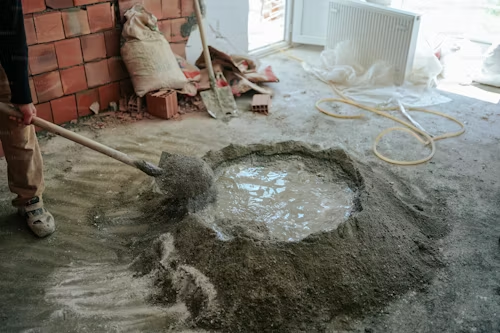
When Queensland homeowners engage a contractor for residential work, the general expectation is that the work is completed and of a good quality. However, this may not always occur.
In the first article of this series, we explored non-completion claims, the eligibility criteria, time limits and the lodgment process. The second part of this series will discuss defective work complaints, an alternative mechanism that residential homeowners are entitled to under home warranty insurance.
DEFINING ‘DEFECTIVE WORK’
Schedule 2 of the QBCC Act defines ‘defective’ as building work that is faulty or unsatisfactory. This includes work that:
- does not comply with the Building Act 1975, Building Code of Australia, or an applicable Australian Standard; and
- involves use of a manufactured product, and that product has been used, constructed or installed in a way that does not comply with the product manufacturer’s instructions.
Structural Defects
Defects are generally categorised as being ‘structural’ or ‘non-structural’. The Queensland Building and Construction Board’s Rectification of Building Work Policy (‘Rectification Policy’) defines ‘structural defective building work’ as defective building work (other than residential construction work causing subsidence) that is faulty or unsatisfactory because it does one or more of the following:
- adversely affects the structural performance of a building;
- adversely affects the health or safety of persons residing in or occupying a building;
- adversely affects the functional use of a building; or
- allows water penetration into a building.
For instance, a leaking roof, a major cracking of walls, or a leaking shower into internal walls would all be classified as structural defects.[1]
Non-Structural Defects
‘Non-structural defective building work’ is defined by the Rectification Policy to mean defective building work (other than structural defective building work or residential construction work causing subsidence) that is faulty or unsatisfactory because:
- it does not meet a reasonable standard of construction or finish expected of a competent holder of a contractor’s license of the relevant class; or
- it has caused a settling in period defect in a new building.
Examples of non-structural defects may include chipped internal paintwork, sticking drawers, or a minor cracking of plasterboard.[2]
TIME LIMITS
On lodging a defective work complaint, homeowners should be cognisant of two timeframes:
- the period of cover (i.e., how long the insurance is valid for); and
- the duration of time within which the homeowner must lodge a complaint upon noticing a defect.
Where the claimant seeks to make a structural defects complaint and insurance was taken out after 28 October 2016, cover extends for six years and six months from whichever is the earliest of: (a) the date of the contract; (b) date of payment for the insurance; or (c) when work first commenced. Claims must also be made to the QBCC within three months of noticing the defect. What this means is that the homeowner must notice the structural defect within the cover period and a complaint must then be lodged within 3 months of noticing it.
For non-structural defect claims, cover extends for six months from when works were completed, and claims must subsequently be lodged with the QBCC within seven months of the completion date.
As these insurance timeframes are specified by legislation, the QBCC has stated that they must be strictly applied.[3]
LIMITATIONS TO CONSIDER
Homeowners should be aware the following works are not covered when making a defective work complaint:
- fire alarm system, scaffolding, curtains, blinds, internal shutters, carpets, floating floors, vinyl, earthmoving and excavating, laying asphalt or bitumen, insultation, insect screens;
- electrical appliances;
- cubbyhouse, doghouse, shade sail, phone or data cables, water meter, water tank not used for primary water supply;
- construction of a slab that does not include construction of a building on top of it; and
- any other work associated with the construction of the residence that are not directly part of the residence, e.g., driveways, paths, fences.
For other limits of building work covered by the QBCC, see here.
STANDARDS AND TOLERANCES GUIDE
Fortunately, the QBCC has developed a Standards and Tolerances Guide (‘STG’) to assist homeowners and contractors with defective work complaints. This may reduce the risk of a dispute arising in relation to such standards and tolerances.
You can read the full version of the STG here.
Once a homeowner has lodged a defective work complaint, the QBCC will register the dispute and a Resolution Services officer will be assigned. The final instalment of this series will examine this resolution process for defective work.
Lamont Project & Construction Lawyers
The Lamont Project & Construction Lawyers team has extensive knowledge dealing with the QBCC Act and with lodging defective work complaints. With this knowledge and expertise, Lamont Project & Construction Lawyers can provide the required support and advice during the claim cycle.
If you would like to discuss any matters raised in this article as it relates to your specific circumstances, please contact Lamont Project & Construction Lawyers.
The content of this article is for information purposes only and does not discuss every important topic or matter of law, and it is not to be relied upon as legal advice. Specialist advice should be sought regarding your specific circumstances.
Contact: Peter Lamont or Cliff Mei
Email: peter@lpclawyers.com or cliff@lpclawyers.com
Phone: (07) 3248 8500
Address: Level 2, 349 Coronation Drive, Milton Qld 4064
Postal Address: PO Box 1133, Milton Qld 4064
